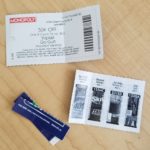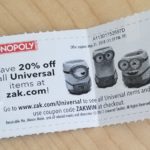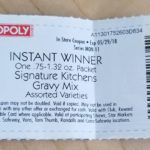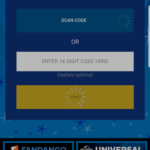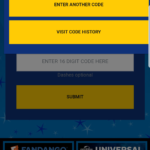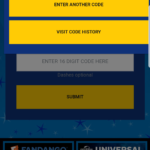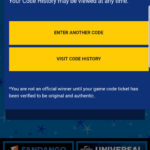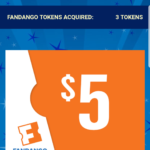 Safeway has come up with a marketing triple threat. The grocery store chain has teamed up with Monopoly and other brands to increase customer involvement. With the economy finally headed in the right direction, Safeway is trying to find a way to compete without cutting prices. While price may be the strongest motivator during a recession, during times of economic prosperity, customers are looking for experience. The name of the game is increased shopper involvement for increased shopper loyalty.
Safeway has come up with a marketing triple threat. The grocery store chain has teamed up with Monopoly and other brands to increase customer involvement. With the economy finally headed in the right direction, Safeway is trying to find a way to compete without cutting prices. While price may be the strongest motivator during a recession, during times of economic prosperity, customers are looking for experience. The name of the game is increased shopper involvement for increased shopper loyalty.
The Monopoly Aspect
When a shopper visits one of the participating stores, including Safeway, they earn a monopoly card, in a sense. This card is actually a pamphlet with several aspects to it. One of the aspects are the game markers. Each card comes with four game markers that can be applied towards winning a prize. These game markers are equipped with glue strips similar to those on envelopes. When a shopper collects all of the game markers in a real estate location on the game board, they can claim the prize. In general, four unique game markers are needed for a prize. However, prizes with a value larger than $5,000 require five or eight game markers. The idea of the game markers are to keep shoppers coming back. For example, I currently have several real estate locations with two or three game markers and I’m itching to get my hands on the last one. So,, I’m itching to go grocery shopping again.
Also, asking users to physically put the markers on a Monopoly board creates an emotional connection between the shopper and the promotion. This is the idea of the Ikea effect: a cognitive bias in which consumers place a disproportionately high value on products they partially created. As soon as shoppers put their first game markers on the board, they will be less likely to abandon the game. And, thus, they will become more likely to get excited at the idea of going grocery shopping at Safeway.
The likelihood of a shopper finding that last game marker however is very unlikely. When it comes to the $1 million dollar prize, in particular, the chance is almost zero. There are two of those prizes available in the entire country. This means that only two tickets of on of those unique game markers will be printed. Monopoly is counting on the fact that not all of the shoppers will participate in the game. So, they are hoping that those two game markers actually end up in the trash and the $1 million prize never has to be paid out. Nevertheless, shoppers are more likely to win some of the smaller prizes, which will keep shoppers engaged in the game until the promotion ends.
The Coupon Aspect
The front of the game card touts that there are “over $250 million in prizes and money saving offers.” While some of this will come from the prizes mentioned above, a great deal will come from coupons. And most of this “money” will be wasted as shoppers fail to assemble all of the game markers and simply throw their cards in the trash. As you will see below, these coupons could be for a sale on a product. They could be for an “instant win”, aka a free product. Or they can be for a coupon for another retailer or even for a chance to win a sweepstakes.
Even though I’m not a big supporter of getting customers used to coupons or giving away free things, I think that this is a great way to get shoppers coming back. The coupons are for products that are generally off season or that are not selling well. For example, out of my 17 cards, I received 4 coupons for gravy …in February. It might be just me, but gravy is typically a Thanksgiving food for me. Another aspect that I thought was interesting was the fact that Monopoly let other retailers submit coupons for their stores. I had never heard of zak.com before this promotion. But, because of this coupon, I went online to look it up. By advertising in Safeway, zak.com is getting access to their target market: members of the family who do the cooking. Zak.com is also likely paying to have its advertisement in this campaign. Therefore, Monopoly and the grocery stores are recuperating some of the money to make this campaign a reality.
Moreover, what I like about these coupons is that only half of them were actually coupons. The other ones were chances to win sweepstakes. Shoppers can take those codes and go online to see if they won. Additionally, they can download an app and scan the bar-code there. This creates excitement for the possibility of winning the sweepstakes which later translates into excitement for going grocery shopping, an activity that is usually considered mundane. If they do not win the sweepstakes, they may win a Fandango token. With thirty tokens, the user can buy a $5 off card. This brings yet another brand into the promotion. Shoppers can also use the app to scan the QR code of the game markers. While they still have to cut up the pieces and put them on the board to win, scanning the code reduces the barriers to adoption. The users have to put less effort into seeing what they have gathered. Once they see that they are only three away from winning a prize, they will be more inclined to participating in the game.
The Sponsor Aspect
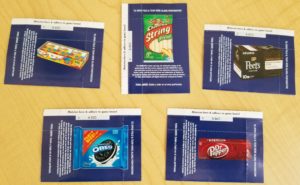 As if there weren’t enough brands involved in this promotion, on my 17 cards, I noticed five brands on the back of the cards. They serve no purpose other than reminder advertising. Those brands are also likely hoping to get some of the goodwill that comes with the excitement created by the game.
As if there weren’t enough brands involved in this promotion, on my 17 cards, I noticed five brands on the back of the cards. They serve no purpose other than reminder advertising. Those brands are also likely hoping to get some of the goodwill that comes with the excitement created by the game.
All in all, I find this promotional campaign to be rather genius. Clearly, the goal is to get shoppers excited to go grocery shopping as opposed to considering it a mundane task. In the process, grocery stores and Disney brands are hoping to get customers more involved with the brand in order to increase customer loyalty. While there were a lot of brands tied in to this promotion, they are all related to food and to Disney, thus making it feel like a cohesive campaign.
As a shopper, would you partake in this campaign? Why or why not?
